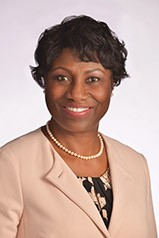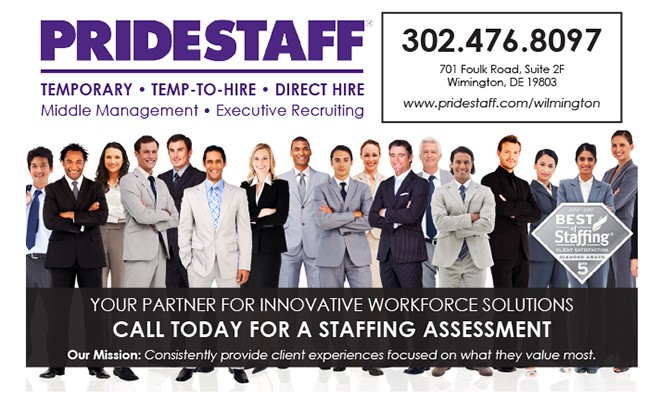Retaining A Multi-Generational Workforce
 By Monica Eboda, MBA,
By Monica Eboda, MBA,
Owner/Strategic Partner
PrideStaff Wilmington
For the first time ever, our nation has five generations in the workforce:
Traditionalists (born 1945 and before): Increased lifespans are having our oldest generation working longer or even coming out of retirement.
Baby boomers (born 1946 – 1965): While this generation is rapidly exiting the workforce, many are forced to keep working because of the Great Recession.
Generation X (born 1965 – 1980): This segment comprises over one-third1 of our workforce and the lion’s share of workplace leaders.
Millennials (born 1980 – 2000): More than one in three U.S. workers today are millennials, and as of 2015 they have surpassed gen X to become the largest share of the American workforce.1
Generation Z (born in the 21st century): The newest entrants to our workforce, they are vital to our economy’s future success.
In the workplace, each group is unique in its needs, motivations, communication styles, use of technology and more. Multiply each of these factors by five generations and what do you get?
An unprecedented level of diversity – and an unprecedented retention challenge for managers.
Driving Retention and Performance in Each Generation
Employment opportunities are abundant, so your business must do everything possible to engage and retain talent of all ages. While it’s important to guard against generational stereotyping, a management strategy that addresses generational needs will have the biggest impact on job satisfaction, retention and performance.
Traditionalists
Traditionalists are typically disciplined and loyal, and may feel marginalized in the workplace. To maximize their satisfaction and retention:
Institute phased retirement and flexible hours to keep them in the fold, longer.
Offer work as part-time consultants and mentors to facilitate knowledge transfer and show that you value their expertise.
Provide hands-on technology training, specifically in new technology.
Baby boomers
Boomers tend to be competitive, focused on accomplishment, committed to working long hours, and comfortable with top-down management. Economic pressures have forced many boomers to delay retirement, which could explain why their generation has the lowest level of engagement.2
To re-engage and retain boomers:
Encourage face-to-face meetings and in-person collaboration.
Support new-skills training that maximizes boomers’ usefulness in your workplace.
Improve work flex to allow them to meet family demands of children and aging parents.
Capitalize on mentoring opportunities to tap boomers’ expertise and strengthen intergenerational ties.
Generation X
Entrepreneurial, independent and adaptable, gen X workers thrive on direct, constructive feedback – and they typically hate micromanagement.
Keep them happy, productive and working for you by:
Maximizing opportunities for flexibility and independence (e.g., flex time, telecommuting, job sharing).
Empowering, delegating and then giving them as much free rein as possible to accomplish work as they see fit (if they hit objectives).
Encouraging them to continue embracing new technologies.
Breaking down “feedback sessions” into regular, frequent events (not annual reviews).
Millennials
They value flexibility more than previous generations. They are optimistic, change-tolerant and tech savvy. And they are notorious job-hoppers. In fact, the average job tenure of millennials is just 2.8 years (average for all workers is 4.2 years).3
Help millennials realize their potential by:
Nurturing their passion for their work with cross-generational mentoring, job shadowing and cross-training.
Creating clear, 3-to-5-year growth plans which align their professional goals with your organization’s.
“Decentralizing” work by focusing on productivity and results, rather than hours logged.
Generation Z
Just entering the workforce, gen Z is predicted to be: even more flexible in communication styles than predecessors, more concerned about sustainability and focused on work ethic, resilience, etiquette and self-responsibility.
Welcome this generation into your organization – and maximize their impact – by:
Creating many points of contact for constructive feedback, training and two-way communication.
Giving them a voice in your organization and taking their ideas seriously.
Offering frequent, customized opportunities to learn and grow.
Struggling to retain talented people, a professional staffing and recruiting firm can provide the right support to keep your employees engaged, focused and performing at their peak. For more information contact our Wilmington staffing and employment experts at 302-476-8097 or email us at [email protected].
Client Testimonial
“Monica and her staff are flexible, accommodating and deliver what was discussed. They will do whatever it takes to make a customer feel satisfied.” – Hospitality/Country Club
Sources:
1 http://www.pewresearch.org/fact-tank/2015/05/11/millennials-surpass-gen-xers-as-the-largest-generation-in-u-s-labor-force/
2 http://www.gallup.com/businessjournal/163466/generation-gap-workplace.aspx
3 https://www.bls.gov/news.release/pdf/tenure.pdf





